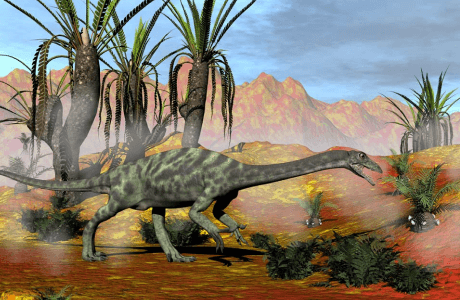Anchisaurus

Anchisaurus is a small basal sauropodomorph dinosaur that lived during the Early Jurassic period in the Portland Formation, in what are now Connecticut and Massachusetts.
Small But Mighty
It was a rather diminutive dinosaur, up to 2 metres long and weighed 27 kilograms. However, a larger species, Ammosaurus major was found in the same formation, it was estimated to be up to 2.5 to 4 metres (8 ft 2 in to 13 ft 1 in) long and 32 kilograms (70 lbs). Ammosaurus is now viewed to be a junior synonym of Anchisaurus.
Sauropodomorph remains were first documented in North America in 1818, when some bones were uncovered by Mr. Solomon Ellsworth Jr. while excavating a well with gunpowder in East Windsor, Connecticut. At the time of their discovery it was thought that the bones might be those of a human, but the presence of tail vertebrae falsified that idea. They are now recognized as those of an indeterminate sauropodomorph
Veggies
Digesting plant matter is a much more intensive biochemical process than digesting meat. This herbivore swallowed gastroliths (gizzard stones) to help break down the food in its stomach. Herbivorous dinosaurs needed a huge gut. Since this had to be positioned in front of the pelvis, balancing on two legs became increasingly difficult, as dinosaurs became larger and they gradually evolved into the quadrupedal position that characterizes the later sauropods such as Diplodocus.
